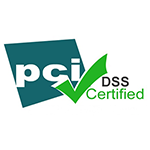© 2025 Next Level Business Services Inc. All Rights Reserved.
From where we work to how we work – A metamorphosis
By Namrata Dhar
Today was Elena’s first day of work. She woke up at 6am on a Monday, finished her business and travelled the distance from her lounger to her work desk; in a measly 5 minutes. Elena finished top of her class at university and got placed in one of the leading IT firms in the country.
But her first day at work was not how yours was.
According to the 2018 telecommuting statistics by Global Workplace Analytics, the US had 4.3 million remote workers, which made up 3.2% of the entire workforce. But with the advent of 2020, the world woke up to a cacophonous tone of panic, uncertainty and absolute unacceptance. The pandemic gave rise to a rapid pivot of working style, ergonomics and most importantly, it upended the way organizations operate. Unpredictability often springs innovation, and this was no different. Companies were on their toes and devised solutions to continue operations remotely. The biggest positivity was how seamlessly a feather like technology fitted right into our schedules when it looked like an iceberg from the top. In the light of these changes, below are our top 3 takeaways that have shaped the workforce management strategies of organizations in 2020.
1. Contingent hiring– According to an Intuit 2020 report, roughly 25-30% of the US workforce is currently contingent, with more than 80% of large firms intending on substantially increasing their use in the coming years. Contingent workers bring on board the specialized skill set coupled with being readily available in the market which leads to reducing hiring costs and improving the company revenue.
2. Workplace Automation – Back in the day, automation was synonymous with the word robotics but simply put, it has come to drastically alter how we hire and operate our inhouse processes. From streamlining recruitment with an ATS (Applicant Tracking System), a software that applies machine learning in auto-screening candidates to reducing bias in hiring processes through AI, firms have been solely dependent on solutions and technology to sail them through. The potential of AI for enhancing the hire quality is huge as it utilizes data to homogenize common traits between candidates’ experience, skills, and job requirements. Technological solutions are ideal for carrying out data-centric tasks, but companies need to be mindful of utilizing it without hampering user privacy and its ability to overcome unique challenges that would otherwise take up a lot of time.
3. Skill to upskill – Technology has altered the way we do business, adding to the need of constantly updating employee technical and soft skills. According to a research by PwC, 79% of the respondents feel that shortage of skilled talent was one of their top 3 worries, and 46% said upskilling was their preferred solution. Upskilling isn’t just any run of the mill training session that equips employees short-term, it is a well thought out strategy that requires identifying skills gaps, planning long and short-term goals and executing it by way of methods that do not seem daunting or too difficult to comprehend for your staff. It is one of the most vital approaches that firms can equip their people with the skills and competencies they need.
The Human Resource platform is undergoing a cycle of change that it has never seen before Covid-19 thrust a very hasty spate of transformation on companies and one of the major ones was shifting completely to remote work. But this dark cloud had a silver lining. This remote nature of work has the heightened potential to unlock a workforce which is not only global but highly skilled and specialized. From automating internal HR processes to learning new ways to hire, maybe, this pandemic shone a light that brightened up the staffing industry.
Namrata Dhar
Director - Client ServicesTalent Solutions








